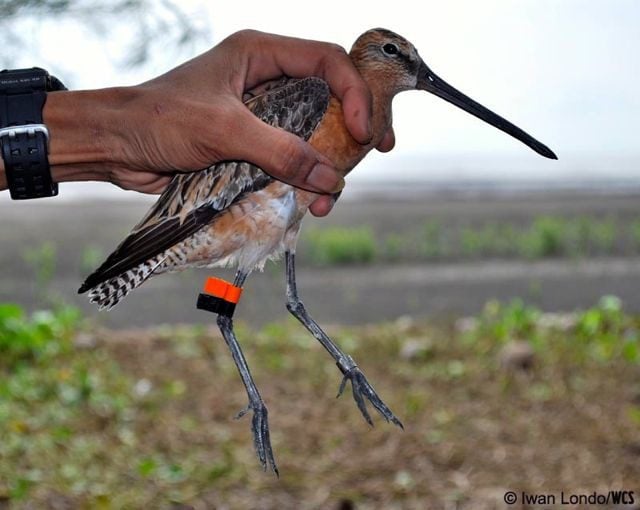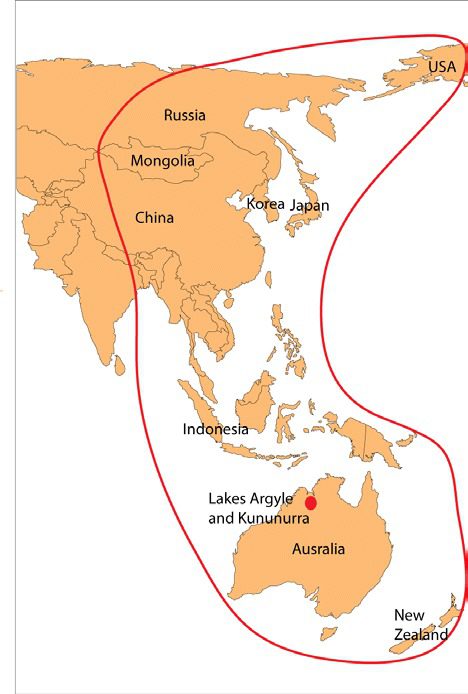Indonesia Becomes a Migration Site for Birds from China and Russia

-
Date:
24 Jan 2023 -
Author:
KEHATI
Migrating water birds from China, Russia, and Europe have made the Indonesian archipelago their destination. The migratory pattern of water birds from the northern hemisphere begins in September and lasts until November, when Europe, Russia, and China enter winter. In the winter, the food supply for wild animals decreases.
When other animals hibernate due to cold weather, birds choose to migrate to warmer climates. Water birds from Europe, Russia, and China migrate to Southeast Asia as well. Bird migration destinations include Vietnam, Thailand, Malaysia, and Indonesia.
“This water bird migration route begins in Russia and travels south to China, Vietnam, Thailand, and Malaysia before crossing into Indonesia. When they first arrived in Indonesia, they went to Sumatra via Rupat Island in Riau, then to Java Island, then to Kalimantan, Sulawesi, Nusa Tenggara, and Papua”, said Jakarta Birdwatcher Society (JBS) Coordinator Ady Kristanto.

Last weekend, Biodiversity Warrior KEHATI worked with JBS to observe water birds at the Angke Kapuk Mangrove Nature Park in North Jakarta. This activity is a type of citizen participation in the annual Asian Waterbird Cencus (AWC). Wetland International Indonesia coordinates AWC in Indonesia.
Apart from those originating from Russia and China, Indonesia also has birds migrating from the southern hemisphere: Australia. When the Northern Hemisphere enters spring in April and May, Australia enters winter. Because of this condition, Australian birds like the sacred kingfisher (todirhamphus sanctus) and the rainbow bee-eater (merops ornatus) have migrated to Indonesia.
According to Ady, a technique known as Bird Banding Scheme can be used to track these birds’ movements. This technique allows researchers to keep an eye on tagged birds. They are observed the next year to determine whether the birds can still survive after being released.

Migratory birds caught in Java are given orange and black flag bracelets, while birds caught in Sumatra are marked with a black and orange. Birds that received this sign in May will return to the northern hemisphere.
Bird watchers from all over the world exchange information about the whereabouts of these birds. Bird watching groups in each country share information about the return of these migratory birds to their natural habitat through international forums. The distance traveled by migratory birds can be determined by exchanging this information.
Other countries pay special attention to the majority of the protected migratory birds. If in a country the bird is hunted, it can cause international problems.
For example there was a large-scale capture of waterbirds in Semarang and Indramayu for culinary purposes, while these birds are apparently protected in their home countries, China, Russia and Japan.
International Partnership.
In 2006, interested countries whose territories serve as migratory bird routes formed the East Asian-Australasian Flyway Partnership (EAAFP). Through this partnership they work together to protect migratory birds.
The partnership includes eighteen countries, six intergovernmental organizations (IGOs), thirteen international non-governmental organizations (NGOs), one international organization, and one international private company. The EAAFP’s goal is to protect not only migratory waterbirds, but also the people who rely on them for survival.
The AWC provided EAAFP with data on waterbird population growth rates around the world through the International Union for Conservation of Nature (IUCN) forum. If it keeps decreasing, the next phase is to evaluate whether the bird population is vulnerable, endangered, or severely endangered.
The government is giving priority attention to water birds with critically endangered status, through the Ministry of Environment and Forestry and the National Research and Innovation Agency (known as BRIN: Badan Riset dan Inovasi Nasional), so that these bird species can be included in protected bird groups.
Several donor agencies have conducted additional research on the critically endangered status because it has become a priority. Global financial assistance can be designed using this information.
The progress of the AWC is influenced by a country’s strategic scope. Only in the Indonesian provinces of Sumatra and Java are routine census activities carried out. This is of course different from countries like Malaysia and Thailand, the area of these two countries is smaller so it’s easier to monitor.
According to Ady Kristanto, the Waterbirds Management Scheme requires that data in conservation areas be improved every month or three months. If only relying on Forest Rangers or Forest Ecosystem Controllers (known as PEH: Pengendali Ekosistem Hutan) in conservation areas, the results are still lacking.
Every year, KEHATI Biodiversity Warrior Network strives to be more active in contributing data. The popularity of citizen science programs like BW KEHATI is expected to rise. This is crucial as a method of citizen involvement in water bird conservation.
Because people are accustomed to short-term goals, environmental damage is still rarely considered by the general public. Many people are still unaware that long-term damage to the waterbird ecosystem will result in food shortages and serious health problems.
